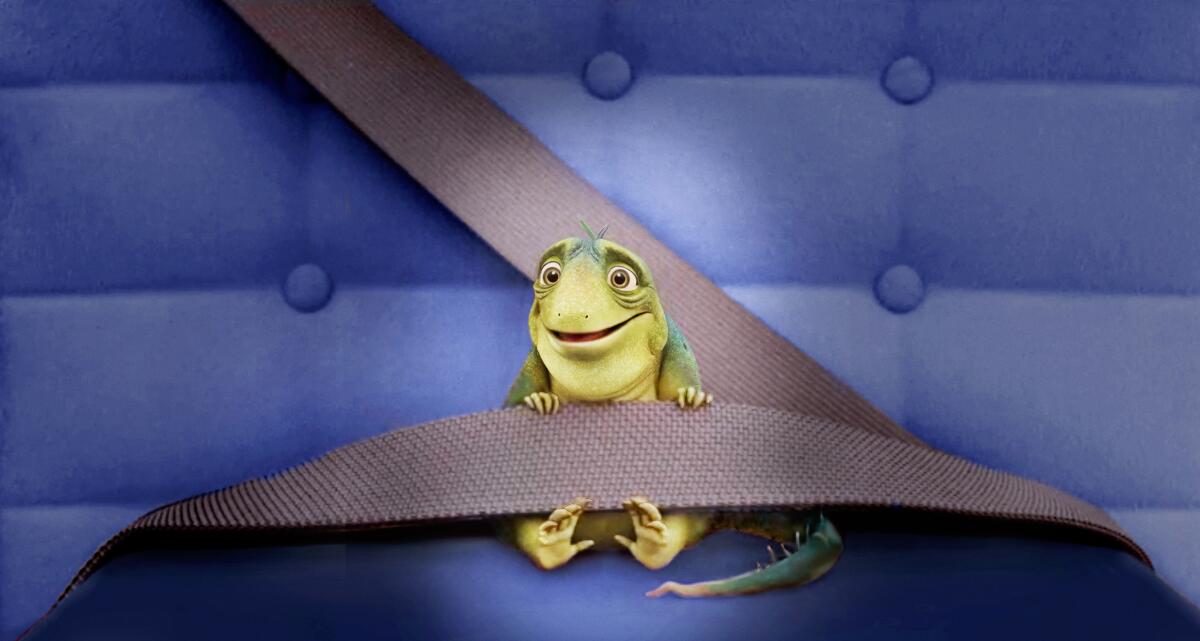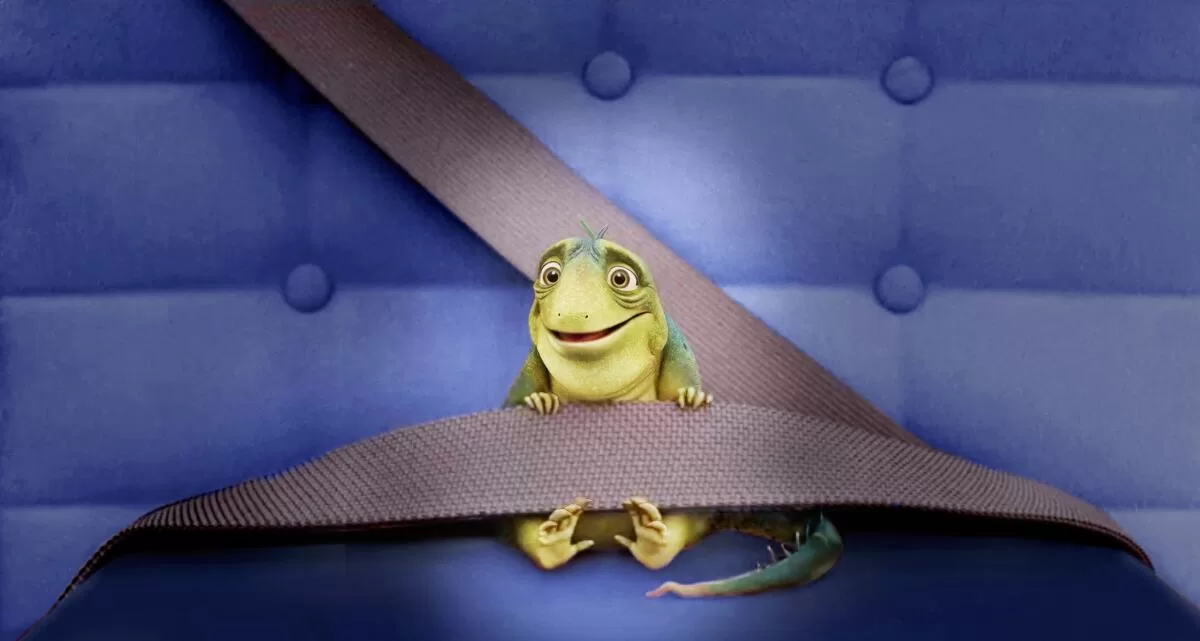For the first time, Amazon Prime Video and Netflix will both be part of what has long been known as “TV Week,” also called the “upfronts.” It’s the official start of the ad-selling season where advertisers commit their spending for the fall TV season that launches in September.
Netflix, for example, will hold a presentation and an all-day interactive event called “The Netflix Experience” at Manhattan’s Chelsea Piers, where advertisers will get sneak peeks at new seasons of its top shows, including “Bridgerton,” “That ‘90s Show,” and “Squid Game,” along with unscripted properties such as a roast of retired NFL superstar Tom Brady.
The week, which starts annually on the second Monday in May, is a rite of spring for advertisers and media buyers who travel around New York for lavish programming presentations, followed by parties where booze flows freely and large quantities of jumbo shrimp are consumed.
Following the show-and-tell, executives decide where to place their advance orders for commercial time, which guarantees the number of viewers reached and typically provides better pricing than if they waited to buy closer to airtime. Media Dynamics, a firm that tracks the data, put the total for the 2023-24 season at $27 billion, which includes $8.3 billion for streaming services.
As ratings for traditional TV continue to erode, media buyers say they welcome the opportunity to reach viewers through high quality programs on the massive streaming platforms. Outside live sports, younger viewers have largely abandoned traditional TV for streaming, and more advertising dollars are following them. Amazon and Netflix are smelling blood and are looking to commercials as a source of revenue growth for their streaming operations.
Ted Harbert, a veteran network executive who participated in numerous upfronts over his career, sees Amazon and Netflix’s full scale push into the ad market as a symbolic statement of their intentions.
“It’s not ‘If you can’t beat ‘em, join ’em,’” Harbert said. “It’s more like, ‘We can take these guys. We’ve got a product that’s more attractive than theirs.’”
The upfronts have evolved over the last decade. After long serving as the domain of broadcast networks ABC, CBS, NBC and Fox, they now prominently feature the streaming operations of their parent companies. CBS, which held presentations at Carnegie Hall, now has its sales executives meet privately with ad executives. Google’s YouTube joined the festivities several years ago with expensive star-studded presentations.
But some upfront traditions remain frozen in time. NBC parent Comcast, Fox Corp., ABC owner Walt Disney Co. and Warner Bros. Discovery have been locked into the same upfront schedule for years. Stars still show up onstage at the events and will pose for photos with ad buyers at parties.
Amazon has stayed on the outskirts of the marquee week in recent years as it courted advertisers for the NFL’s “Thursday Night Football” package and free ad-supported streaming service Freevee. The company’s move to May 14 at the downtown Manhattan venue Pier 36 comes with a major initiative — a lower-priced, ad-supported subscriber tier of Prime Video announced in the fall.
While Amazon has not disclosed the number of subscribers for the ad tier, media buyers expect the move to add a significant amount of commercials to the market. Prime Video subscribers are automatically enrolled in the ad-supported tier unless they pay extra to watch commercial-free.
Prime Video currently accounts for 2.8% of all TV viewing in the U.S., according to Nielsen data for March. In an April 11 letter to shareholders, Amazon Chief Executive Andy Jassy said Prime Video has the potential to reach 200 million viewers monthly.
Amazon and Netflix could find the field crowded as legacy media companies are already trying to steer more advertising dollars into their streaming services (the average household has 3.8 subscriptions, according to a report by research firm MoffettNathanson). Even AMC Networks, a smaller player, is introducing ad-supported tiers of its streaming channels, which include AMC+ and Shudder.
“You’re adding a massive amount more supply to the marketplace and way outpacing any kind of increase in demand,” said David Campanelli, executive vice president and chief investment officer for Horizon Media, an ad-buying firm “What it does is it helps bring down ad pricing for streaming overall.”
Netflix stepped into the ad sales business last year with a new, lower-priced tier for subscribers willing to sit through commercials. In 2023, the company gave a virtual presentation to advertisers on the day vacated by CBS. (The company had planned a live event but decided to avoid the potential optics of having Writers Guild of America members picketing outside during what many described as “the Netflix strike.”)

(Courtesy of Netflix)
Netflix has said its ad-based plan has 23 million monthly active users — a small slice of its total of 270 million subscribers. Fewer than 10 million of the ad-tier users are in the U.S., according to ad firms that have done deals with the company (Netflix has not revealed ad revenue in its earnings and has not disclosed the domestic ad-tier subscriber number).
On a recent investor call, Netflix co-Chief Executive Greg Peters touted the growth of ad-tier users, up 65% quarter to quarter, but acknowledged the company has “much, much more to do in terms of scaling.”
Netflix’s small number of ad-tier subscribers was reportedly a sticking point with marketers during last year’s upfront dealmaking with Netflix. But several media buying executives, who declined to speak on the record ahead of negotiations, say they want to be involved with Netflix early to establish relationships as its advertising initiative grows.
Netflix accounted for 8.1% of all U.S. TV viewing, according to Nielsen data for March.
Part of the appeal of Netflix‘s entry into advertising is the ability to have products integrated into its programs that have the potential to hit a pop culture sweet spot. While some series and movies cannot carry commercials due to preexisting agreements with producers and studios, about 90% of Netflix programming is available for advertising.
Ad-buying executives said they are impressed so far with the range of formats Netflix is providing to their clients.
Frito-Lay’s Smartfood brand was a title sponsor for a recent season of reality dating show “Love Is Blind.” It’s an example of how everything old can be new again as the streaming world adopts traditional TV conventions, echoing how viewers back in the day would see a box of Post cereal and other brand-name products during the end credits of “The Andy Griffith Show.”
The streamer’s move into live events is also offering sponsorship opportunities. Skincare product maker La Roche-Posay signed up to have a presence on the Netflix Slam tennis event. T-Mobile and Nespresso were sponsors of the Netflix Cup golf tournament.
Ad executives say a major enticement for their clients is the chance to use Netflix’s intellectual property in commercial campaigns. In a first for the streamer in the fall, insurance company Geico used the main character from the Netflix animated film “Leo,” which stars Adam Sandler as a classroom pet lizard. The spots showed Leo getting some pointers during the commercial shoot from Geico’s veteran spokes-gecko, Martin.
Advertisers will also soon have the chance to have their spots appear when users pause whatever program they are watching for five seconds or more. For the Netflix ad-tier subscriber, there will be no escape.
